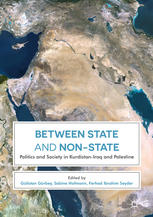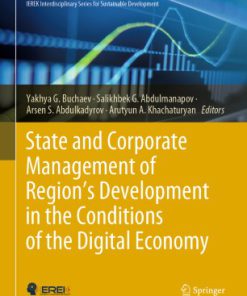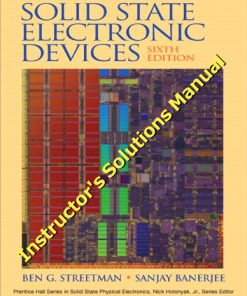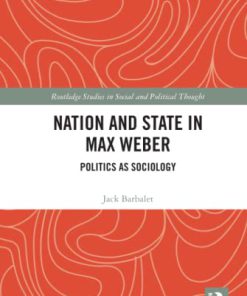Between State and Non State Politics and Society in Kurdistan Iraq and Palestine 1st Edition by Gulistan 1137601817 9781137601810
$50.00 Original price was: $50.00.$25.00Current price is: $25.00.
Between State and Non State Politics and Society in Kurdistan Iraq and Palestine 1st Edition by Gulistan Gurbey – Ebook Instant Download/Delivery ISBN(s): 1137601817, 9781137601810

Product details:
- ISBN 10: 1137601817
- ISBN 13: 9781137601810
- Author: Gulistan Gurbey
This edited volume compares the internal dimension, politics and society in Kurdistan-Iraq and Palestine. In particular, it focuses on internal processes in Kurdistan-Iraq and Palestine (Palestinian Territory of the West Bank and Gaza Strip) in their specific shaping, development and transformation. The contributing authors analyze the transformation processes of the internal power structures, the economic basics, and the civil societies and provide an overview of the current political, economic and societal situation and challenges in both regions. The book presents the similarities and differences between both de facto states with regard to a set of guidelines: legitimacy, power relations, transformation of politics and society. It provides empirical explanations and contributes to a better understanding of both de facto states.
Table of contents:
Chapter 1: Introduction: Conceptualizing De Facto Statehood of Kurdistan-Iraq and Palestine
Theoretical and Conceptual Dimension
Anthology Structure
Articles of the Anthology
Notes
References
Part I: Historical Background and Turning Points
Chapter 2: The Iraqi Kurds: Historical Backgrounds of a Nonstate Nation
Introduction
Rebellion and Oppression: The History of the Iraqi Kurds from State-Building Until the Great
War and Peace in Kurdistan: 1961 Until 1990: The Boundaries of the Arrangement of the Kurdis
The Baath Government and the Policy of Scorched Earth
The Kurds After the Overthrow of the Baath Government in 2003
The War of the IS Against the Kurds
Summary
Notes
References
Chapter 3: Historical Background of the State-Building Process in Palestine
Introduction
The PLO, Arafat, and Institutional-Building in the Diaspora
Civil Society, Political Institution and Leadership in the West Bank and Gaza Strip, 1967–1993
The Establishment of the PNA: When the Outside and Inside Collide
Hamas as a Political Challenge for Fatah Hegemony
Conclusion
Note
References
Part II: Political System and Internal Power Structure
Chapter 4: The Evolution of the Political System of the Kurdistan Region of Iraq
Introduction
A Snapshot of the Contemporary Political System of the KRI
Kurdistan Today
Kurdish Political Cultures: Families, Tribes, and Parties
The DNA: Kurdish Autonomy in the 1970s
The Kurdistan Region Emerges: The Trauma of the 1990s
The Kurdish Adolescent: Overcoming Internal Problems, 1999–2006
The Kurdistan Political System Matures: Being a Federal Region of Iraq, 2005–2014
Challenges and Opportunities for the Future
Notes
References
Chapter 5: The (Quasi-) Political System of Palestine
Introduction
Definitions of the Term Political System in Political Science and in Palestine
The Emergence of the PLO: Formation of a System?
The PA and the “Enslaved” Quasi-Political System
Internal Power Politics
The Second Intifada and How Israel and the USA Undermined Arafat’s Rule and the PA
Inter-Power Relations
The Fissure of the Palestinian Quasi-System: Hamas Period and the Takeover of the Gaza Strip
How Israel and the International Community Jeopardized Hamas Governance
How Hamas Governance Was Jeopardized by Internal Players?
Fayyadism: New Era in the Palestinian Quasi-System
Fayyadism and External Pressures: How They Entrenched the Quasi-Political System
Internal Politics and the PA New Authoritarian Trend
Conclusion
Notes
References
Part III: Economic Fundamentals and Challenges
Chapter 6: The Economic System(s) of the Kurdistan Regional Government, Iraq
Introduction
Background
Methodological Challenges
Iraq’s Command Economy
The KRG: An Economic Trajectory
The Self-Rule Era
General Features
Market and Elite Monopoly
Corruption and the Economic System
The KDP Model
The PUK Model
Conclusion
Note
References
Chapter 7: What Is the “Palestinian Economy”?
The Dual Economy Fallacy and the Endurance of Dependency
The Bigger Picture: The Real Palestinian “Economic System”
The Shape of the PA Macro-Economy Under Colonial Domination
Conclusions: Which Palestinian Economy for Which State?
References
Part IV: Civil Society and “State”
Chapter 8: The Reality of Civil Society in Kurdistan Region
Historical Overview
Civil Society in Iraq
Obstacles to Civil Society in the Kurdistan Region
External Factors of Political Instability in the KRG
Internal Factors of Political Instability in the KRG
Kurdish Political Parties: Enhancing or Diminishing Civil Society
Syndicates and Associations
Nongovernmental Organizations
Media
Conclusion
References
Chapter 9: Civil Society in Palestine
Introduction
Historical Overview of Civil Society in Palestine
After the Nakba (1948–1967)
The PLO: Emergence and Dominance
The Intifada Phase (1987–1993)
Civil Society Under the PA
The PA Versus Civil Society
NGO-ization
By Way of Conclusion
Note
References
Part V: Foreign Relations: Examples
Chapter 10: The United States and the Kurds of Iraq: Strange Allies
Introduction
Overview of Iraqi Kurdish Ambitions and American Policies Toward the Iraqi Kurds
Military Assistance to All “Iraqi Forces”
Conclusion
Notes
References
Chapter 11: Palestinian Diplomacy: Past and Present
Introduction
The Beginning of Palestinian National Struggle
The Early Diplomatic Initiatives of the PLO
The Palestinian Intifada and the Signing of the Oslo Agreement, 1987–1993
The Oslo Agreement
Diplomacy of Mahmoud Abbas
Palestine Joins the International Criminal Court
Conclusion
References
Chapter 12: Conclusions
People also search:
difference between state and non state institution
similarities between state and non state institution
difference between state and non state terrorism
relationship between state and non state actors
difference between state and non state regionalism
You may also like…
Computers - Computer Science
Engineering - Civil & Structural Engineering
Smart Technologies for Society, State and Economy Elena G. Popkova
Politics & Philosophy - Politics
Engineering - Electrical & Electronic Engineering
Politics & Philosophy
Employment Relations in Outsourced Public Services: Working Between Market and State Anna Mori
Politics & Philosophy - Anthropology
Afghanistan Politics and Economics in a Globalising State 1st Edition Niamatullah Ibrahimi
Politics & Philosophy - Sociology
Nation and State in Max Weber : Politics as Sociology 1st Edition Barbalet
Politics & Philosophy
Animals & Pets - Insects & Arachnids












